We recently published our handy and easy-to-get-started guide on building your own personal library of books. To help you in this journey, here is a list of our favorite 20 books to get you started.
Building a personal library of great books but don’t know where to start? Often, you can make the mistake of curating a personal library that doesn’t reflect the wide variety of genres in literature but your personal reading habits. Well, once you have gone through our beginner’s guide in setting up a personal library, here’s another guide for you – 20 of our favorite books from different genres to give you an idea about setting up a personal library that shall reflect upon your rich literary taste. Happy Reading!
- 1. To Kill a Mockingbird by Harper Lee (1960): English Classics
- 2. Battle Royale by Koushun Takami (1999): Dystopia and/ Foreign-language Books
- 3. People We Meet on Vacation by Emily Henry (2021): Romance Books
- 4. The Hitchhiker's Guide to the Galaxy by Douglas Adams (1979): Satire/ Science Fiction
- 5. The Great Gatsby by F. Scott Fitzgerald (1925): Period Writing
- 6. The Harry Potter Series by J.K. Rowling (1997): Magic / Fantasy Writing
- 7. The Subtle Art of Not Giving a F*ck by Mark Manson (2016): Self-help Books
- 8. The Watchmen by Alan Moore (1986): Graphic Novels
- 9. Wide Sargasso Sea by Jean Rhys (1966): Popular Spin-offs
- 10. The Book Thief by Markus Zusak (2005): Modern Classics from Around the World (1)
- 11. The Kite Runner by Khaled Hosseini (2003): Modern Classics from Around the World (2)
- 12. Sapiens by Yuval Noah Harari (2014): History/Non-Fiction Books
- 13. Penpal by Dathan Auerbach (2012): Horror
- 14. Queer Intentions by Amelia Abraham (2019): Inclusion
- 15. The Little Prince by Antoine de Saint-Exupéry (1943): Children
- 16. Persepolis by Marjane Satrapi (2000): Autobiography
- 17. The Inheritance of Loss by Kiran Desai (2006): Indian Writing in English
- 18. Tomb of Sand by Gitanjali Shree (2021): Translated works
- 19. The Sherlock Holmes Collection by Arthur Conan Doyle (1902): Crime Reads
- 20. Where the Sidewalk Ends by Shel Silverstein (1974): Poetry
1. To Kill a Mockingbird by Harper Lee (1960): English Classics
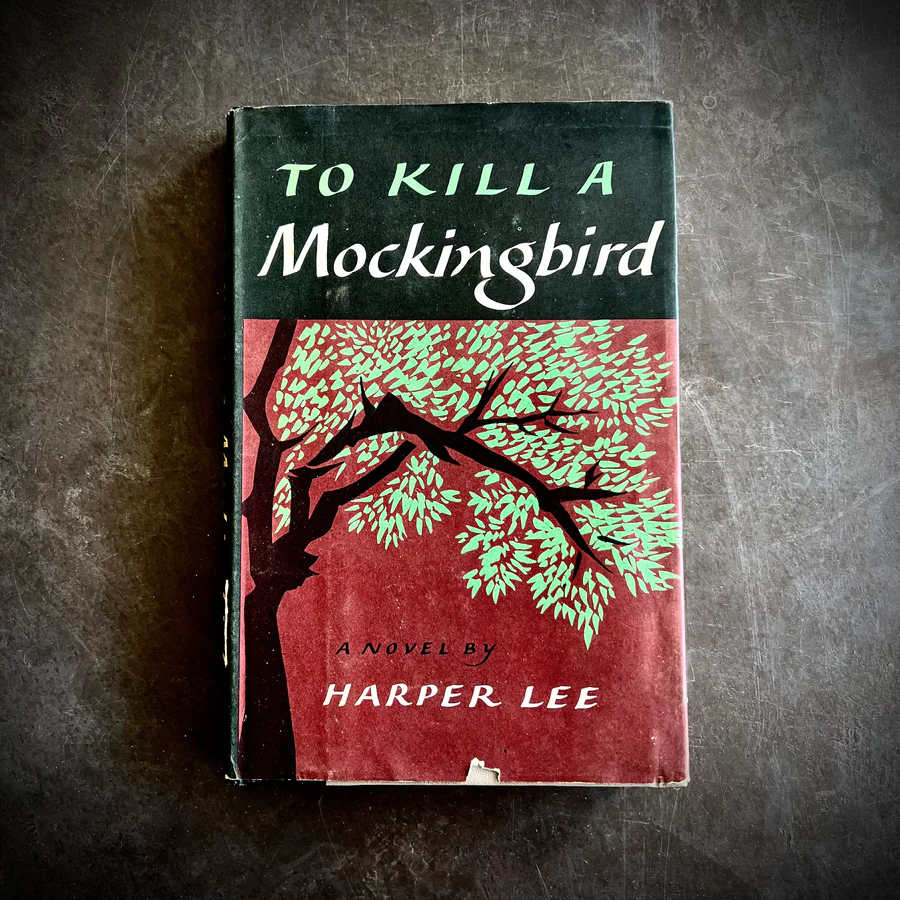
Published in 1960, To Kill a Mockingbird by Harper Lee is a poignant and enduring novel that delves into the complexities of racism, moral integrity, and the innocence of childhood. Set in the racially divided American South during the 1930s, the story unfolds through the eyes of Scout Finch, a young girl. She grows up in the fictional town of Maycomb, Alabama, where her father, Atticus Finch, is a lawyer tasked with defending Tom Robinson, a Black man accused of raping a white woman. Atticus’s commitment to justice and equality stands as a beacon of hope in a town marred by bigotry. The novel navigates the complexities of morality and empathy through Scout’s innocent perspective. As she befriends a recluse named Boo Radley and witnesses the trial of Tom Robinson, she learns to challenge societal norms and confront her own biases. The narrative highlights the destructive power of prejudice and the importance of empathy in fostering a just and equitable society.
Bringing To Kill a Mockingbird into your personal library will feel like inviting an old friend over for meaningful conversations. Beyond just a story, it’s a mirror of society’s challenges and an invitation to understand the intricacies of justice, prejudice, and moral integrity. It’s an English classic that asks us to reflect on the world we live in, challenging us to confront uncomfortable truths.
2. Battle Royale by Koushun Takami (1999): Dystopia and/ Foreign-language Books

Koushun Takami’s Battle Royale, originally published in 1999, thrusts you into a chilling alternate reality where survival is pitted against humanity. In a society wracked by political tyranny and social unrest, the government enforces an annual event known as the “Battle Royale.” The chosen participants are a group of high school students who are taken to an isolated island, equipped with weapons, and forced into a horrific fight to the death until only one remains standing. Amidst this nightmarish contest, friendships crumble, loyalties falter, and the characters are forced to confront the depths of their morality and the thin line between victim and perpetrator. As the story unfolds, the lives of the students are laid bare, revealing their fears, desires, and the trauma of their circumstances. While some succumb to the desperation of survival, others grapple with the ethical implications of taking a life. Amidst the violence, the novel delves into the psychology of its characters, exploring the emotional toll of their choices and the unexpected bonds that emerge in the face of certain death.
If the storyline reminds you of another renowned dystopian fiction in “Hunger Games”, you are not the only one who feels so. There has been enough uproar and conversations about the books’ similarities and influences. To make things interesting, Takami’s book was also adapted into a successful blockbuster movie. Irrespective, Battle Royale is a compelling addition to your personal library that delves into the darkness within society and the human psyche.
3. People We Meet on Vacation by Emily Henry (2021): Romance Books
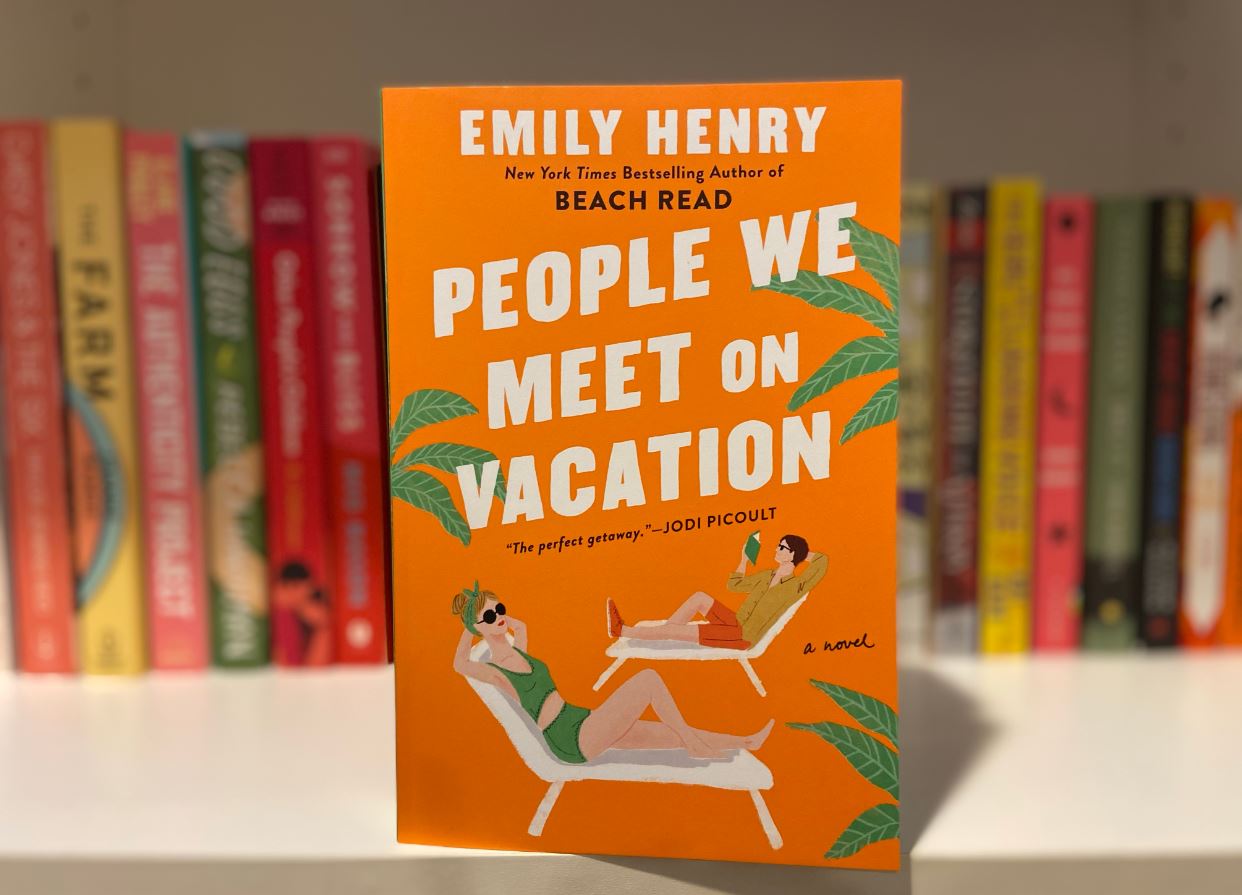
Alex and Poppy are opposites in many ways – Alex is practical and reserved, while Poppy is spontaneous and free-spirited. Despite their differences, their friendship blossoms during college, and they begin taking summer trips together. These vacations are a way for them to escape their routines, explore new places, and enjoy each other’s company. However, a falling-out leaves them estranged, and the annual vacations come to an abrupt halt. Years pass, and Poppy becomes a travel writer while Alex settles into a more predictable life. When Poppy proposes one last vacation to salvage their friendship, Alex reluctantly agrees. As they journey to Palm Springs, the narrative alternates between the present and flashbacks of their previous trips. The story unravels the evolution of their relationship, the reasons behind their falling out, and the unresolved feelings they’ve carried. The vacation becomes a poignant opportunity for them to confront their past, explore their emotions, and discover if their connection can be rekindled.
People We Meet on Vacation will take you on a journey of laughter, emotions, and undeniable chemistry. Emily Henry’s writing is both sharp and tender, capturing the intricacies of friendship and romance. This romantic comedy isn’t just about love; it’s about the moments that shape us. It’s a reminder that the people we meet can unexpectedly change our lives. If you’re looking for a book that celebrates the twists and turns of relationships, this one’s a perfect fit for your personal library.
4. The Hitchhiker’s Guide to the Galaxy by Douglas Adams (1979): Satire/ Science Fiction
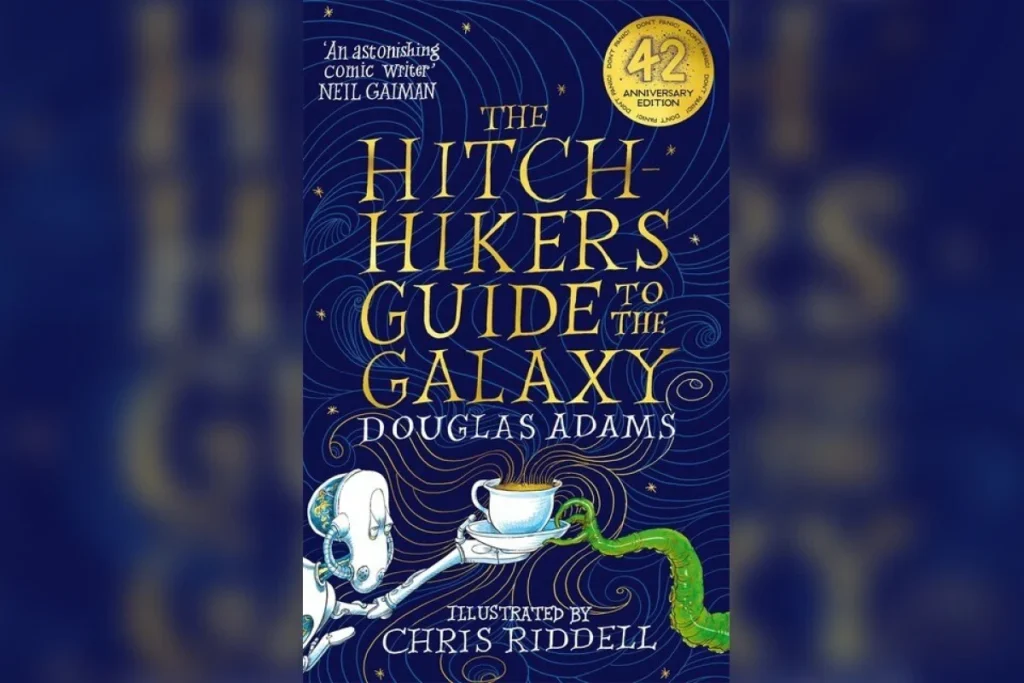
Douglas Adams’ The Hitchhiker’s Guide to the Galaxy, published in 1979, is a science fiction masterpiece that marries wit, absurdity, and interstellar adventure. The story begins with Arthur Dent, an ordinary Earthman who is unwittingly saved from the destruction of his planet by Ford Prefect, an alien researcher for the titular “Hitchhiker’s Guide to the Galaxy.” Together, they embark on an intergalactic journey that defies logic and challenges reality. They encounter a series of bizarre characters, including Zaphod Beeblebrox, the two-headed ex-president of the Galaxy, Trillian, the only other human survivor, and Marvin, a perpetually depressed robot. As they traverse space, they encounter Vogons, bureaucratic aliens with a penchant for bad poetry, and search for the answer to the ultimate question of life, the universe, and everything. The narrative is a rollercoaster of humour and philosophy, with Adams’ satirical commentary on bureaucracy, technology, and the human condition, serving as a backdrop to the comical misadventures of the characters. The “Hitchhiker’s Guide,” a fictional guidebook with a quirky and often unreliable narration, adds an extra layer of absurdity and amusement to the story.
In The Hitchhiker’s Guide to the Galaxy, Douglas Adams elevates science fiction to a new level of satirical brilliance. Beneath the comedic surface, the novel serves as a mirror to human folly and the often perplexing nature of reality. Adams’ humor and keen observations highlight life’s quirks, making you laugh and ponder the absurdity of it all. It is a cult classic that has delighted generations of readers with its irreverence, intelligence, and sheer audacity, and it is an absolute personal favorite of yours truly.
5. The Great Gatsby by F. Scott Fitzgerald (1925): Period Writing
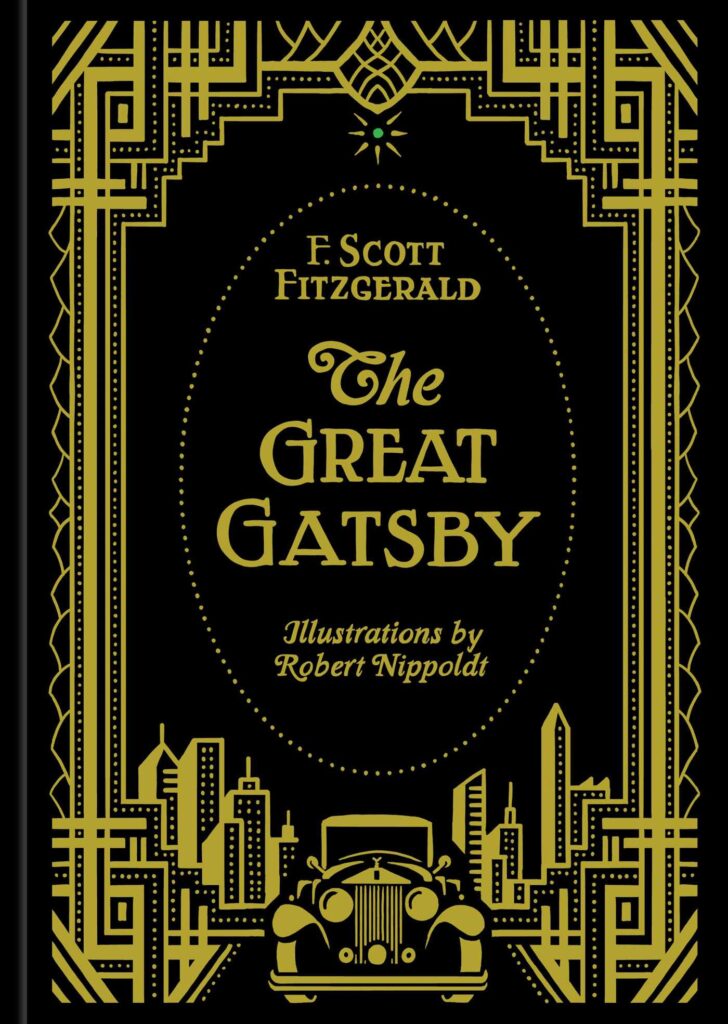
Published in 1925, F. Scott Fitzgerald’s The Great Gatsby is a quintessentially American novel that captures the essence of the Roaring Twenties while exploring themes of wealth, decadence, and the elusive American Dream. Set in the glittering world of 1920s Long Island, the story follows the enigmatic millionaire Jay Gatsby and his infatuation with the elusive Daisy Buchanan. Narrated by Nick Carraway, a young man who moves to West Egg to pursue a career in finance, the novel delves into the lives of the wealthy elite. Nick becomes entangled in the complex relationships of his cousin Daisy and her husband, Tom Buchanan, and he becomes a witness to Gatsby’s unrequited love for Daisy. Gatsby’s lavish parties and extravagant lifestyle are a façade masking his obsession with reclaiming a lost love. As the story unfolds, Fitzgerald explores the stark contrast between the ostentatious wealth of Gatsby and the moral decay that underlies the opulence.
With its poetic prose and nuanced characters, The Great Gatsby offers a scathing critique of the Roaring Twenties and remains an enduring portrayal of the dark side of the American Dream. As you immerse yourself in its pages, you’ll find reflections of our own quest for success, recognition, and fulfilment. This classic serves as a reminder that beneath the surface of decadence and material opulence lies the universal struggle for authenticity and meaning.
Also Read: The Best Works of F. Scott Fitzgerald and Why You Should Read Them
6. The Harry Potter Series by J.K. Rowling (1997): Magic / Fantasy Writing

J.K. Rowling’s Harry Potter series, which debuted with Harry Potter and the Philosopher’s Stone in 1997 (also known as Harry Potter and the Sorcerer’s Stone in the U.S.), is a spellbinding journey through the wizarding world. The series follows the young wizard Harry Potter as he discovers his true identity and confronts the dark forces of the wizarding world, culminating in an epic battle against the formidable Lord Voldemort. Across seven books, readers are introduced to a host of memorable characters, from Harry’s loyal friends, Ron and Hermione, to the mischievous Weasley twins and the enigmatic Severus Snape. Rowling’s storytelling weaves magic, mystery, and themes of friendship, bravery, and the power of choice into an enchanting narrative that captivates people of all ages. The Harry Potter series isn’t just a collection of books; it’s a cultural phenomenon that has inspired countless readers to explore the magic within themselves.
With this collection (go for a box set or a collectable edition), you’re securing a portal to a world of escapism, adventure, and life lessons. With its mix of spells, enchanting creatures, and characters who become your companions, the series becomes a treasure trove that you can revisit time and again, sharing the magic with future generations and finding solace in the familiar embrace of Hogwarts School of Witchcraft and Wizardry.
7. The Subtle Art of Not Giving a F*ck by Mark Manson (2016): Self-help Books

Mark Manson’s The Subtle Art of Not Giving a F*ck, published in 2016, is a counterintuitive guide to living a meaningful and fulfilling existence, grounded in the idea that not everything deserves our attention and concern. Manson starts by dismantling the culture of constant positivity and the pressure to always be happy. Instead, he advocates for choosing what truly matters and focusing on values that align with our authentic selves. Manson introduces the concept of “Subtle Art,” which involves identifying the limited number of things we genuinely care about and investing our energy into those areas. The book weaves personal anecdotes, psychology, and philosophical insights to explore themes such as embracing our limitations, facing harsh realities, and embracing pain as a source of growth. He acknowledges the inevitability of pain and suffering in life and suggests that embracing these experiences can lead to a more meaningful existence. Manson urges readers to confront their fears, embrace failure, and be accountable for their lives.
Manson’s no-nonsense, straightforward writing style is both humorous and thought-provoking. The Subtle Art of Not Giving a F*ck is not a prescription for apathy or indifference. Instead, it’s a guide to discernment – helping us identify where to allocate our time, energy, and emotions for maximum impact. Manson’s message resonates with those seeking a more balanced and authentic approach to life, focusing on what truly matters, a sense of purpose.
8. The Watchmen by Alan Moore (1986): Graphic Novels
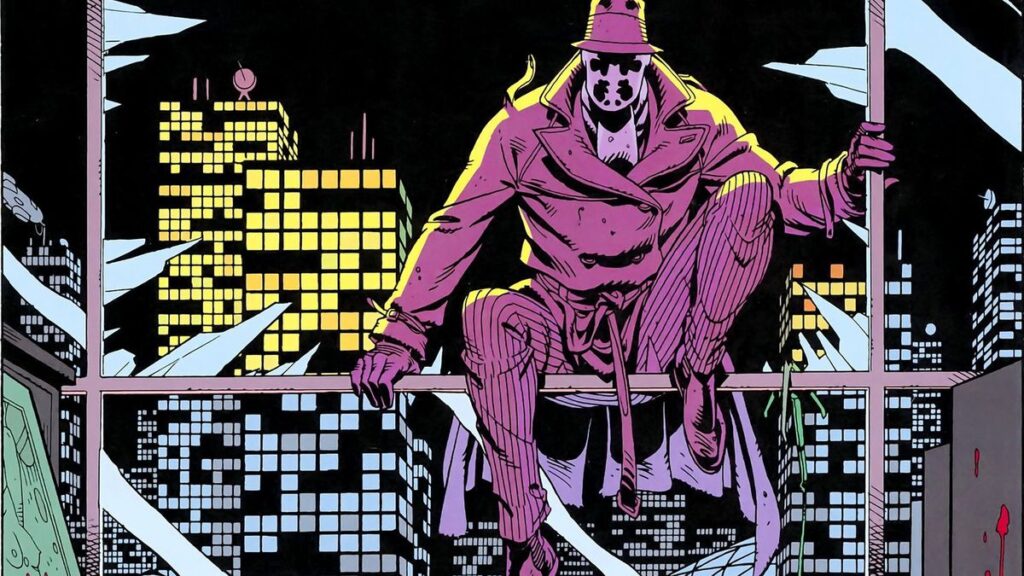
Published in 1986, Watchmen by Alan Moore is a groundbreaking graphic novel that redefined the superhero genre and elevated the medium to new literary heights. Set in an alternate version of 1985, it presents a world where costumed vigilantes once operated but have been outlawed due to their controversial methods. The story unfolds against the backdrop of a tense Cold War era as a murder investigation draws a retired vigilante, Rorschach, back into action. As Rorschach delves deeper, he uncovers a complex web of conspiracy that threatens the very fabric of society. The narrative interweaves multiple perspectives, exploring themes of power, morality, and the consequences of playing hero. Watchmen received critical acclaim and numerous awards for its groundbreaking narrative and artistic innovation. It won the Hugo Award for Best Other Form in 1988, has been adapted into a film, and is widely regarded as one of the greatest graphic novels ever created.
Watchmen serves as both a cultural touchstone and a masterclass in storytelling. Alan Moore’s complex narrative challenges traditional notions of heroism and explores the psychological depths of its characters. The graphic novel’s innovative structure, intricate plot, and exploration of moral grey areas offer a unique reading experience that invites multiple interpretations.
9. Wide Sargasso Sea by Jean Rhys (1966): Popular Spin-offs

Set against the lush landscapes of Jamaica and England, the novel serves as a prequel to Charlotte Brontë’s Jane Eyre. Jean Rhys reimagines and expands upon the story of a character often overshadowed in classic literature, delving into the life of Bertha Mason, the enigmatic “madwoman in the attic” from Brontë’s work. Jean Rhys crafts a haunting narrative that gives voice to Bertha, renamed Antoinette Cosway, and explores her origins, struggles, and the circumstances that lead to her tragic fate. Her story begins in the Caribbean, where she grows up as a white Creole heiress in a world shaped by colonialism and racial tensions. When Antoinette is married to Mr Rochester and moves to England, her life takes a dramatic turn. The novel delves into the complexities of their relationship, the cultural clash, and the impact of secrets and isolation.
As the narrative unfolds, Wide Sargasso Sea masterfully weaves themes of identity, displacement, and the struggles of those who are marginalised and misunderstood. Rhys’ lyrical prose draws readers into Antoinette’s emotional journey as she grapples with her heritage, desires, and the forces shaping her destiny. The lush descriptions of the Caribbean landscape mirror Antoinette’s inner turmoil, and the novel skillfully explores the blurred lines between reality and madness.
10. The Book Thief by Markus Zusak (2005): Modern Classics from Around the World (1)

Published in 2005, this is a poignant and haunting novel set in Nazi Germany during World War II. The story follows Liesel Meminger, a young girl living with a foster family in the fictional town of Molching. Amid the harsh realities of war, Liesel finds solace and meaning in books. Liesel’s journey begins with the theft of her first book – an act that sparks a deep love for literature. Her foster father, Hans Hubermann, teaches her to read and ignites her passion for stories. As Liesel’s bond with Hans grows, she also befriends Rudy Steiner, a loyal and daring boy who becomes her partner in mischief and exploration. Amid the backdrop of Nazi propaganda and persecution, Liesel’s family harbours a Jewish refugee named Max Vandenburg. The novel explores the power of words and storytelling to provide comfort and connection, even in the darkest times. Liesel’s acts of kindness and her affinity for words gradually make her a beacon of hope for those around her.
Narrated by Death, The Book Thief offers a unique perspective on humanity’s capacity for both cruelty and compassion. Zusak’s powerful storytelling captures the resilience of the human spirit and the transformative power of literature in the darkest times. This book serves as a reminder that literature has the power to connect us across time and circumstance, offering solace, empathy, and the promise of redemption. It also boasts one of the most memorable last lines in contemporary literary history as Death (the narrator) announces to Liesel, “I am haunted by humans.”
11. The Kite Runner by Khaled Hosseini (2003): Modern Classics from Around the World (2)
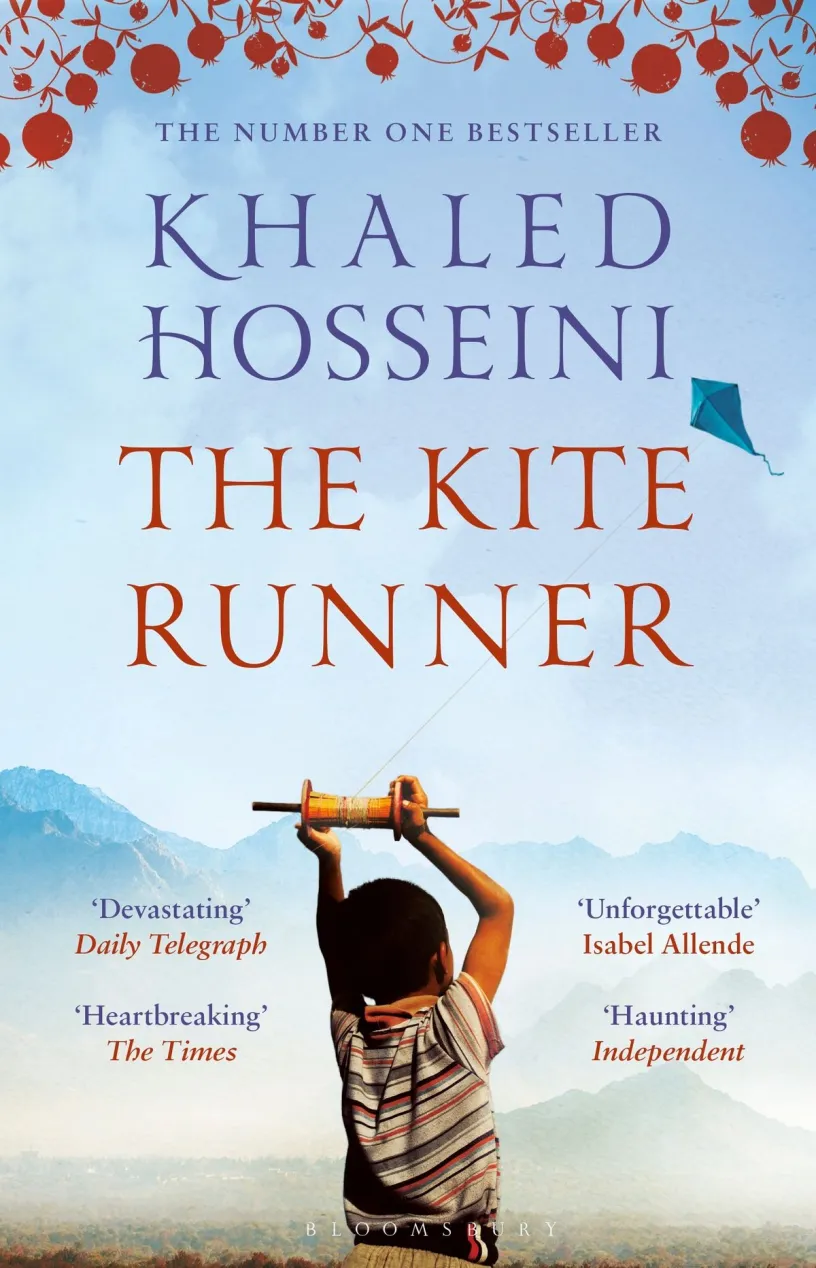
A compelling and emotionally charged novel, this novel explores themes of friendship, betrayal, redemption, and the enduring impact of the past. Set against the backdrop of Afghanistan’s tumultuous history, the story follows Amir, a privileged Pashtun boy, and his loyal Hazara friend Hassan. Amir’s guilt-ridden narrative begins in Kabul, where he and Hassan form an inseparable bond through their shared love of kite running. Despite their differences in class and ethnicity, their friendship is unbreakable. However, a traumatic event forever changes their relationship and casts a shadow over Amir’s conscience. The novel chronicles Amir’s journey from Kabul to the United States as he seeks to escape his haunting memories. Despite his physical distance, the emotional scars of his past continue to shape his choices. An unexpected opportunity for redemption presents itself when Amir is called back to Afghanistan to confront the ghosts of his youth.
Hosseini’s evocative prose in The Kite Runner paints a vivid portrait of Kabul’s vibrant streets, the ravages of war, and the indomitable spirit of its people. Amidst Afghanistan’s upheavals and the rise of the Taliban regime, Amir’s journey resonates as a universal quest for healing and self-acceptance. With its emotional depth and universal themes, this novel stands as a mirror to our own human struggles, making it a valuable addition to your collection.
12. Sapiens by Yuval Noah Harari (2014): History/Non-Fiction Books
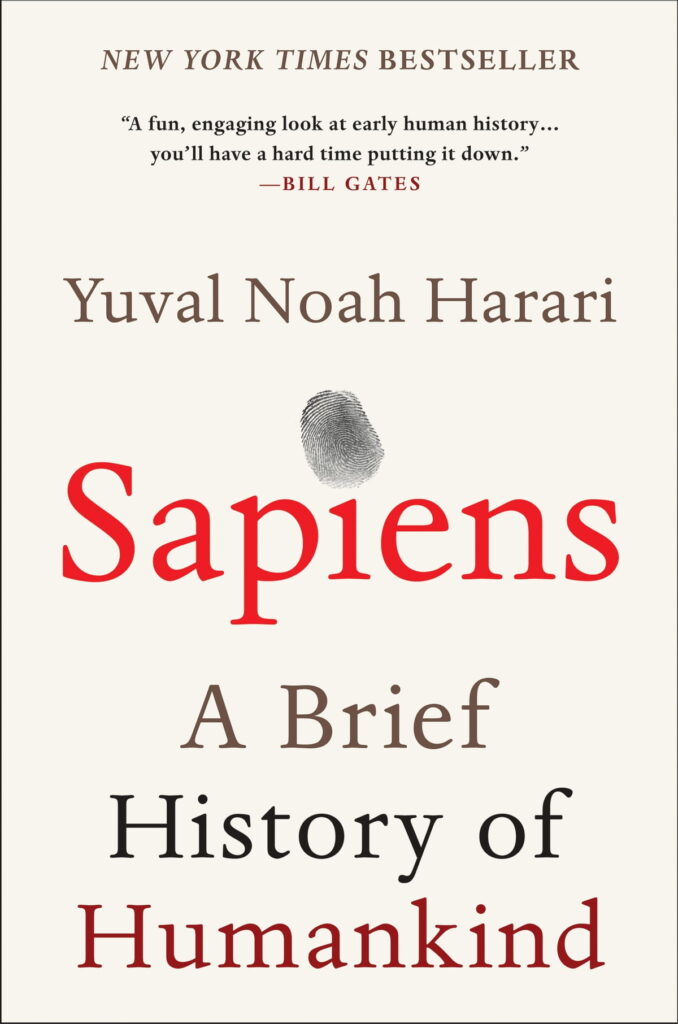
Published in 2014, Yuval Noah Harari’s Sapiens is a captivating voyage through the annals of human history. The book begins by exploring the Cognitive Revolution, the period when Homo sapiens developed the ability to think and communicate in complex ways. This cognitive leap enabled humans to form communities, share knowledge, and establish cultural norms, setting the stage for the development of societies. Harari then delves into the Agricultural Revolution, which marked the transition from nomadic hunting and gathering to settled farming communities. This shift led to significant changes in human behavior, including population growth, social hierarchies, and the rise of organized religions and political structures. The book also examines the Scientific Revolution, which propelled humanity into the modern era by fostering unprecedented advancements in science, technology, and industry. Harari highlights the far-reaching consequences of these developments, including the rise of empires, the spread of globalization, and the impact of capitalism. Sapiens is not just a chronological account of human history; it’s a reflection on the forces that have shaped societies and the patterns that continue to influence our choices.
Harari’s exploration of the stories we tell ourselves – from religious myths to economic ideologies – prompts you to examine your beliefs and consider the narratives that guide your lives. Harari’s accessible writing style translates complex ideas into a relatable narrative, inviting you to gain insights into the remarkable journey that has brought us to the present day. Sapiens is a gateway to understanding the triumphs, challenges, and shared experiences that define us as a species, making it an essential addition to your collection.
13. Penpal by Dathan Auerbach (2012): Horror
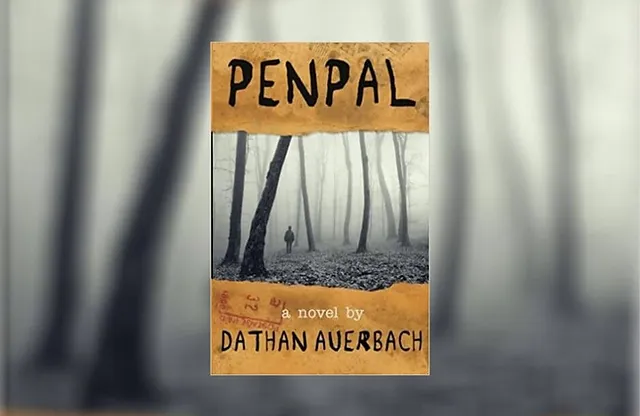
Written by Dathan Auerbach and initially serialised on Reddit, this is a chilling and suspenseful novel that explores the unsettling mysteries of childhood and the lingering terrors of the past. Published as a novel in 2012, Penpal follows an unnamed narrator as he uncovers a series of unsettling events tied to his early years. The story begins innocently, with the narrator recounting his kindergarten teacher’s class project of releasing balloons with attached letters. Unexpectedly, he receives a letter in response from an unknown person, which marks the start of a haunting series of events. As he grows older, he becomes aware of inexplicable occurrences and gradually pieces together a puzzle that unveils a disturbing reality. The reader accompanies the narrator through childhood friendships, eerie encounters in the woods, and the uncanny feeling of being watched. A sense of pervasive dread and unease builds throughout the book, making it impossible to put down.
Penpal is a gripping addition with Auerbach’s storytelling mastery in transforming the mundane into the macabre. The suspenseful narrative taps into our primal fears and keeps you hooked from start to finish. It offers a reminder that beneath the surface of ordinary experiences, there can lurk dark and unsettling truths.
Also Read: The 15 Best Horror Books of the Last Decade (2010-2020)
14. Queer Intentions by Amelia Abraham (2019): Inclusion
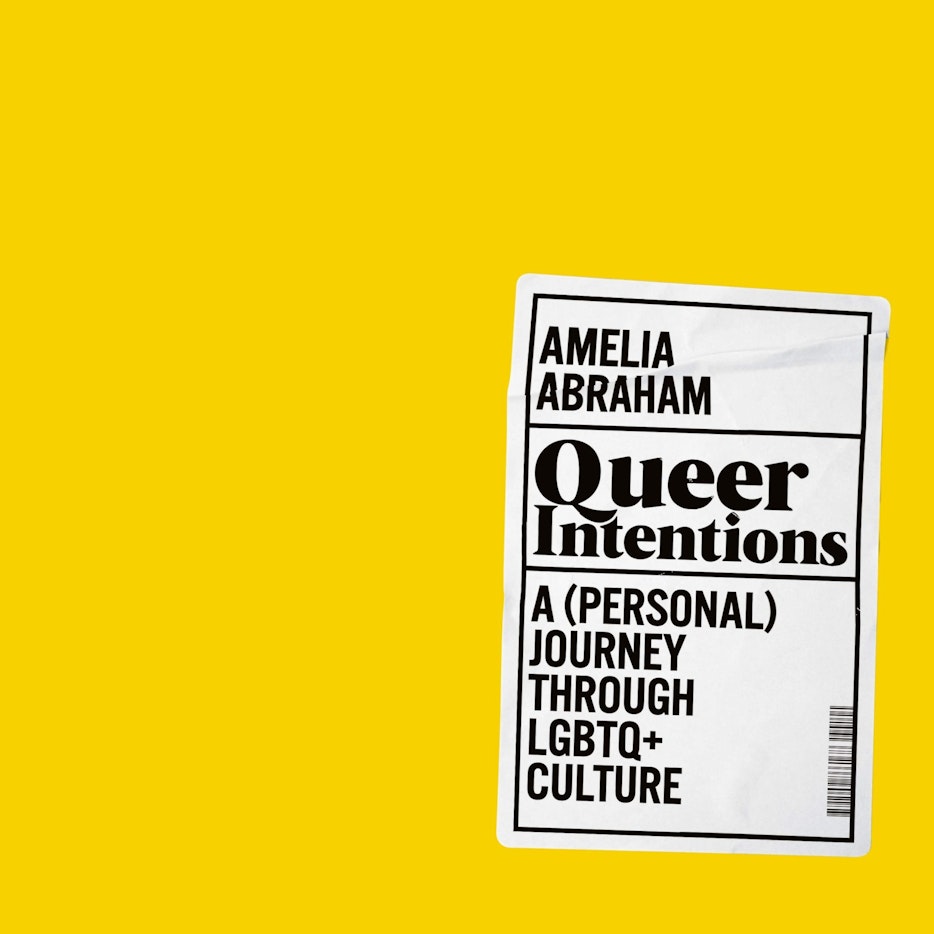
Released in 2019, Queer Intentions: A (Personal) Journey Through LGBTQ+ Culture by Amelia Abraham is a captivating exploration of LGBTQ+ life and culture, presented through a unique blend of investigative journalism and personal anecdotes. Abraham, an LGBTQ+ community member and an insightful journalist, embarks on a global quest to peel back the layers of queer experiences. The book is a masterpiece filled with candid interviews, Abraham’s introspections, and the voices of diverse individuals who share their stories. With unflinching honesty, Abraham dives into various facets of LGBTQ+ life, from the vibrant world of queer parties to the heart of activist movements. Through her encounters with drag queens, activists, and everyday individuals across continents, she offers a nuanced portrayal of the joy, complexities, and challenges that define queer culture. As an advocate for intersectionality, Abraham embraces the multiple dimensions of identity, showcasing the diverse lives and narratives that make up the LGBTQ+ community.
Selected for Polari’s First Book Prize in 2020, Amelia’s personal connection to the subject matter adds depth to her exploration, making the book informative and empathetic. This book serves as a reminder that empathy, inclusivity, and a celebration of diversity are vital in fostering a more compassionate world. The book not only educates but also inspires, making it a powerful tool for anyone who wishes to engage with the dynamic spectrum of LGBTQ+ life.
15. The Little Prince by Antoine de Saint-Exupéry (1943): Children
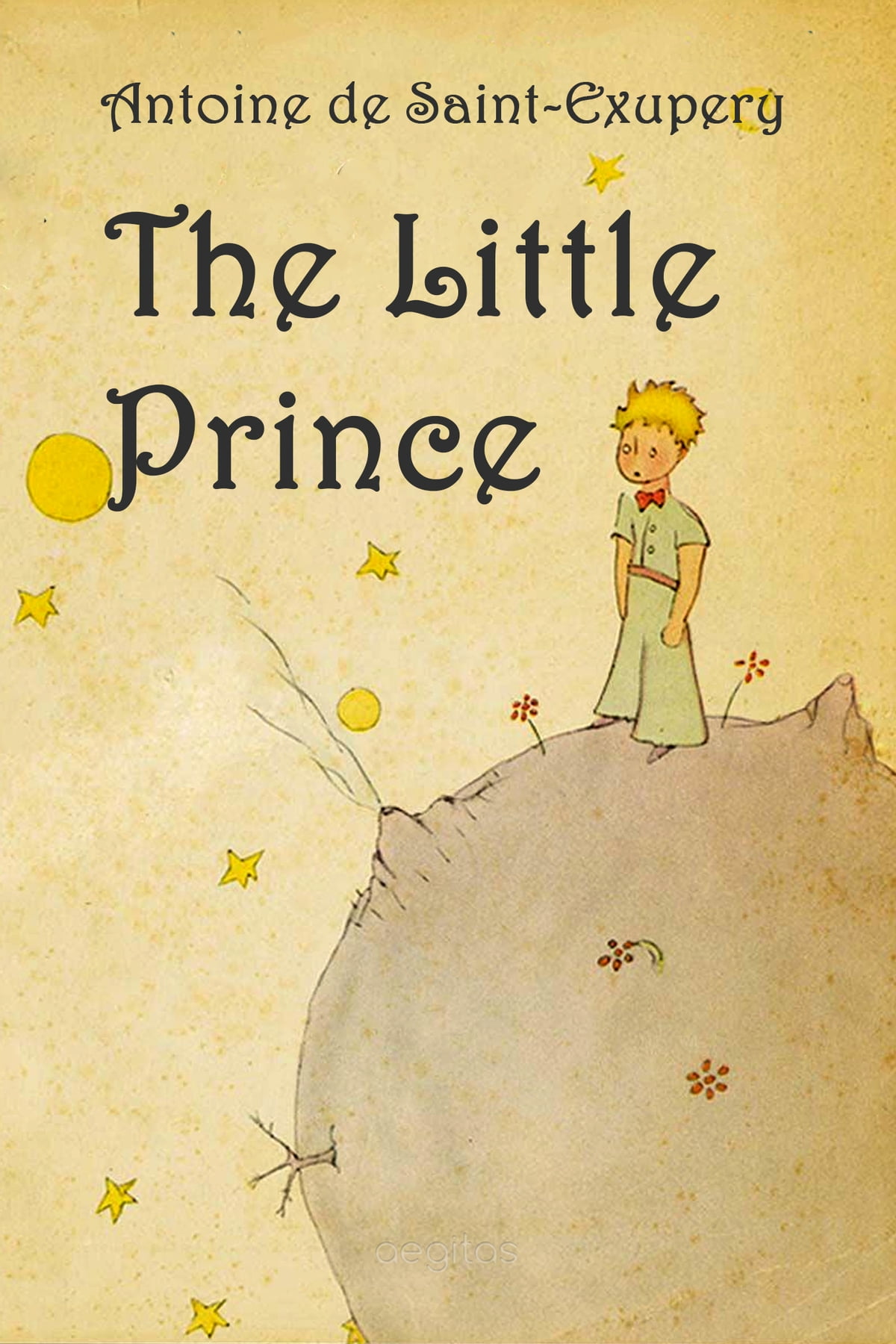
Antoine de Saint-Exupéry’s timeless novella, The Little Prince, published in 1943, is a whimsical and philosophical tale that captivates readers of all ages. Through the encounters of a stranded aviator in the Sahara Desert, the story explores themes of friendship, love, and the wisdom of innocence. The aviator meets a young prince from a distant asteroid who shares his otherworldly experiences and observations about life. As the prince recounts his encounters with peculiar characters, including a conceited man, a lamplighter, and a fox, he imparts profound insights into human nature and relationships. Through their exchanges, Saint-Exupéry delves into the complexities of grown-up existence, highlighting the absurdities of adult behaviour and the loss of childlike wonder. The prince’s quest to understand his own emotions and the nature of love resonates with readers, inviting them to reflect on their own lives and priorities. The novella’s narrative simplicity is enriched by Saint-Exupéry’s whimsical illustrations, which breathe life into the prince’s adventures and the unique worlds he encounters. The fox’s wisdom about taming and the meaning of essential bonds leaves an indelible mark, emphasising the importance of human connections.
By inviting us to see the world through the eyes of a child, this beautifully illustrated tale serves as a reminder of the significance of imagination, compassion, and connection. Adding The Little Prince to your collection means welcoming a story that speaks to the child within us all, offering a gentle reminder of life’s essential truths and the importance of nurturing our sense of wonder.
16. Persepolis by Marjane Satrapi (2000): Autobiography
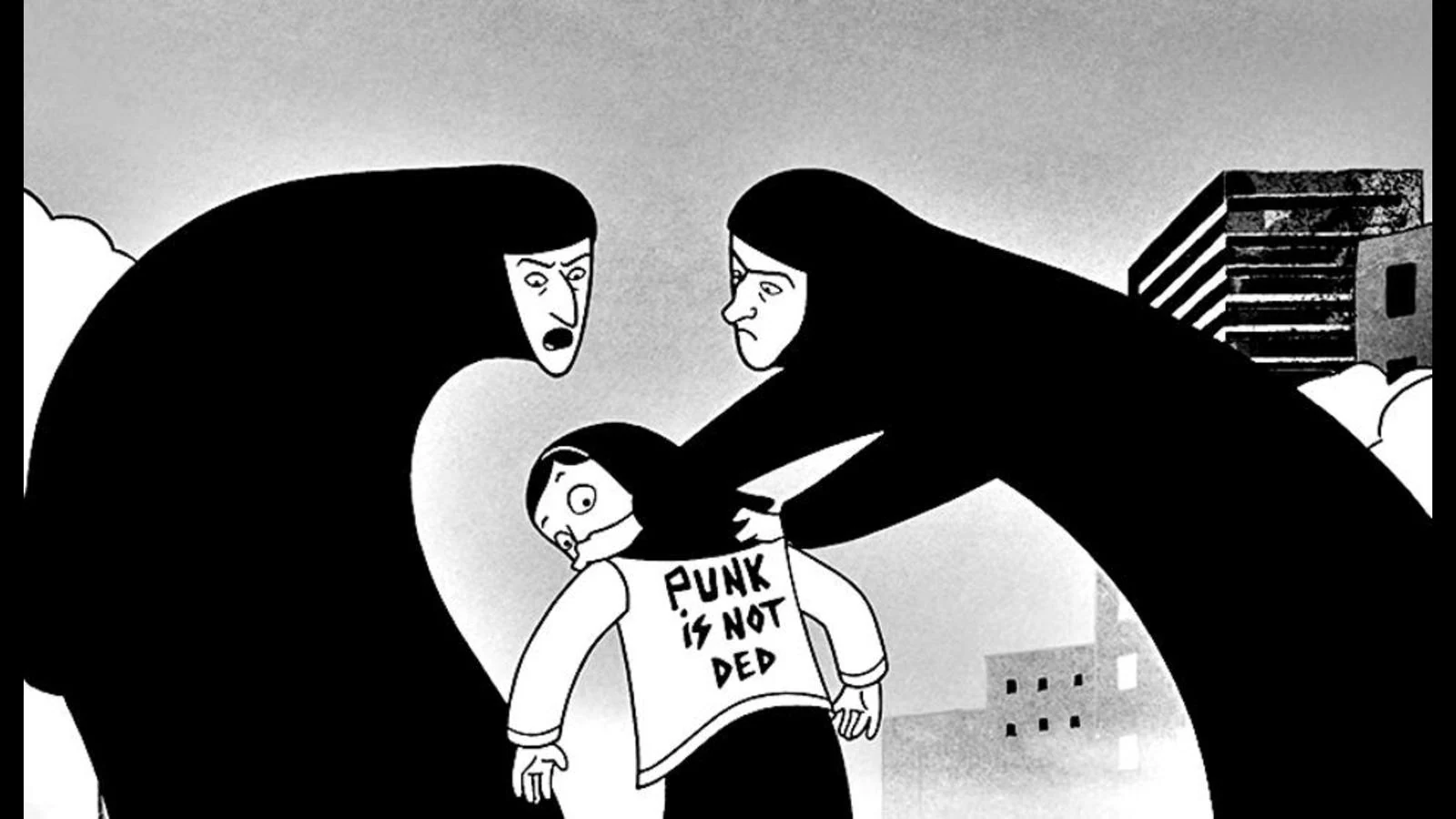
Published in 2000, Persepolis by Marjane Satrapi is an autobiography written as a graphic novel that offers a powerful and intimate window into her personal journey against the backdrop of Iran’s tumultuous history. Set in Tehran, the story begins with young Marjane navigating the complexities of a volatile political landscape under the rule of the Shah. Through poignant illustrations and a personal narrative, Satrapi shares her experiences growing up during the Islamic Revolution, providing a poignant exploration of identity, freedom, and the resilience of the human spirit. The Islamic Revolution brings fundamentalist rule, challenging Marjane’s freedoms and forcing her family to navigate a society undergoing profound transformations. From her childhood innocence to her teenage years marked by rebellion and introspection, the book provides an intimate look at one woman’s journey through a changing society. The narrative’s universal themes of coming-of-age and self-discovery resonate across cultures, making the book a relatable and enlightening exploration of the complexities of adolescence and adulthood.
Persepolis demands a place in your personal library as a powerful testament to the impact of personal stories on understanding history. It transcends traditional narrative formats, weaving art and words to offer a window into a culture and era often obscured by political headlines. By including Persepolis in your collection, you’re opening the door to a narrative that bridges cultural divides and humanizes historical events. Satrapi’s voice speaks to the universal themes of resilience, identity, and the pursuit of individuality against the backdrop of societal change.
17. The Inheritance of Loss by Kiran Desai (2006): Indian Writing in English
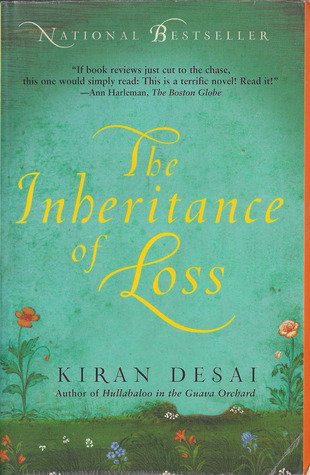
Set against the backdrop of the Himalayan foothills and the bustling streets of New York City, The Inheritance of Loss paints a panoramic picture of lives interwoven by history, culture and the intricacies of human relationships. The story unfolds in the remote Indian town of Kalimpong, where retired judge Jemubhai Patel struggles with a sense of detachment from his homeland and a lingering nostalgia for the past. His orphaned granddaughter, Sai, finds solace and connection in her tutor Gyan, whose own journey of self-discovery is entwined with the political turmoil sweeping the region. As the Gorkhaland movement ignites passions and demands, the characters are confronted with the complexities of loyalty, identity, and the consequences of their choices. Meanwhile, in the bustling streets of New York City, Biju, an undocumented immigrant, navigates the challenges of survival and assimilation. The narratives of these characters intersect and diverge, mirroring the fragmentation and interconnectedness of the world they inhabit.
Published to critical acclaim, The Inheritance of Loss by Kiran Desai is a multi-layered narrative that traverses continents, generations, and emotional landscapes to deliver a profound exploration of identity, displacement, and the persistent quest for belonging. The novel went on to win the Man Booker Prize in the same year, 2006.
18. Tomb of Sand by Gitanjali Shree (2021): Translated works

Tomb of Sand by Geetanjali Shree, brilliantly translated by Daisy Rockwell, explores intricate emotions and cultural boundaries. This International Booker Prize-winning work follows an 80-year-old woman who navigates grief, strength and a crossroads of identities. Her mother-daughter relationship with her “beti” reverses, and she surprises her more “modern” daughter with her ever-expanding worldview and perspective. The narrative weaves through borders of countries, ages, religions, and genders, while delving into the complexities of relationships and historical dimensions like the India-Pakistan partition. Rockwell’s translation is a testament to her mastery, capturing wordplay and the multilingual essence of the original. The novel’s unconventional structure might not be for everyone, but it remains a celebration of language, humor, and the human spirit.
Tomb of Sand offers a unique perspective on the impact of history and language on our lives. Daisy Rockwell’s translation ensures that the novel’s heart remains intact, regardless of language barriers. Adding Tomb of Sand to your personal library is an invitation to embrace a narrative that redefines the boundaries of storytelling and what translated works could really be. Also, remember Rockwell’s advice while reading: “One should not view a translation as an imperfect representation of a superior and unattainable original. Read translations as original works, and you will be much happier.”
Also Read: A Guide to 13 Books on the International Booker Prize 2023 Longlist
19. The Sherlock Holmes Collection by Arthur Conan Doyle (1902): Crime Reads
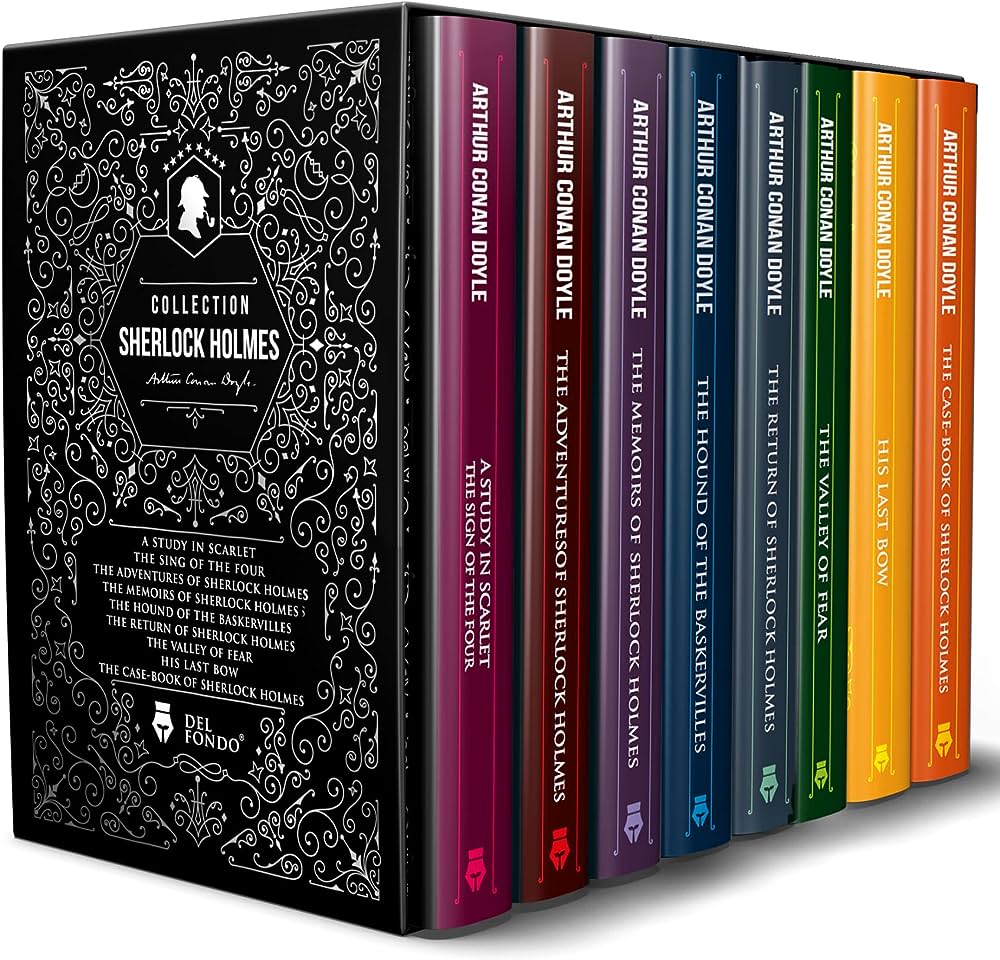
Sir Arthur Conan Doyle’s Sherlock Holmes collection, encompassing four novels and fifty-six short stories published between 1887 and 1927, introduces us to the iconic detective Sherlock Holmes and his loyal companion Dr John Watson. Holmes, known for his keen observation skills, deductive reasoning, and mastery of disguise, collaborates with Watson to solve a wide array of cases. From investigating baffling murders and thefts to exposing frauds and international conspiracies, Holmes employs his exceptional intellect to uncover the truth hidden beneath layers of deception. The dynamic between Holmes and Watson is a cornerstone of the collection, characterised by their camaraderie, humour, and unwavering partnership. Watson’s perspective as the narrator offers readers a relatable lens through which to appreciate Holmes’s brilliance, while Holmes’s enigmatic persona and unconventional methods keep them enthralled. Conan Doyle’s vivid descriptions transport us to Victorian London, a city teeming with gaslit streets, foggy alleys, and an eclectic cast of characters. Holmes’s reputation as a consulting detective attracts clients from all walks of life, providing a rich tapestry of mysteries that reflect the societal issues and moral dilemmas of the era.
The Sherlock Holmes collection is an essential addition to your personal library, a realm where deduction meets entertainment and mysteries unfold in the hands of a master storyteller. Doyle’s creation of Sherlock Holmes has left an indelible mark on detective fiction, influencing countless subsequent works. The collection doesn’t merely provide mysteries to solve; it invites you into a world where intellect reigns supreme; the pursuit of truth is paramount. It guarantees hours of immersive reading that delights, challenges, and showcases the power of reason in the face of the unknown. Another personal favorite!
20. Where the Sidewalk Ends by Shel Silverstein (1974): Poetry

Shel Silverstein’s beloved poetry collection, Where the Sidewalk Ends, published in 1974, is a whimsical and imaginative journey into a world of enchanting verses and playful illustrations. The collection’s title poem serves as a metaphor for venturing beyond the ordinary and embracing the limitless possibilities of creativity. Through witty and thought-provoking verses, Silverstein encourages readers to leave behind the confines of reality and embark on flights of fancy. The book is a treasure trove of poems that evoke laughter, contemplation, and wonder. From the peculiar musings of “Sarah Cynthia Sylvia Stout Would Not Take the Garbage Out” to the heartwarming charm of “Hug O’ War,” each poem presents a unique perspective on life’s joys, challenges, and quirks. Silverstein’s playful use of language and his ability to tap into the essence of childhood make the poems resonate on multiple levels. His whimsical illustrations often accompany the poems, enhancing the visual experience and bringing the verses to life.
Silverstein’s unique ability to tap into the essence of childhood imagination makes this gem of a collection that holds a fond place in the hearts of young and old. You’re opening a gateway to a world where the ordinary transforms into the extraordinary, where words and images intertwine to create a landscape where imagination knows no bounds. This book promises endless joy as you read it and share its whimsical poems and vibrant illustrations with friends, family, and generations yet to come.

